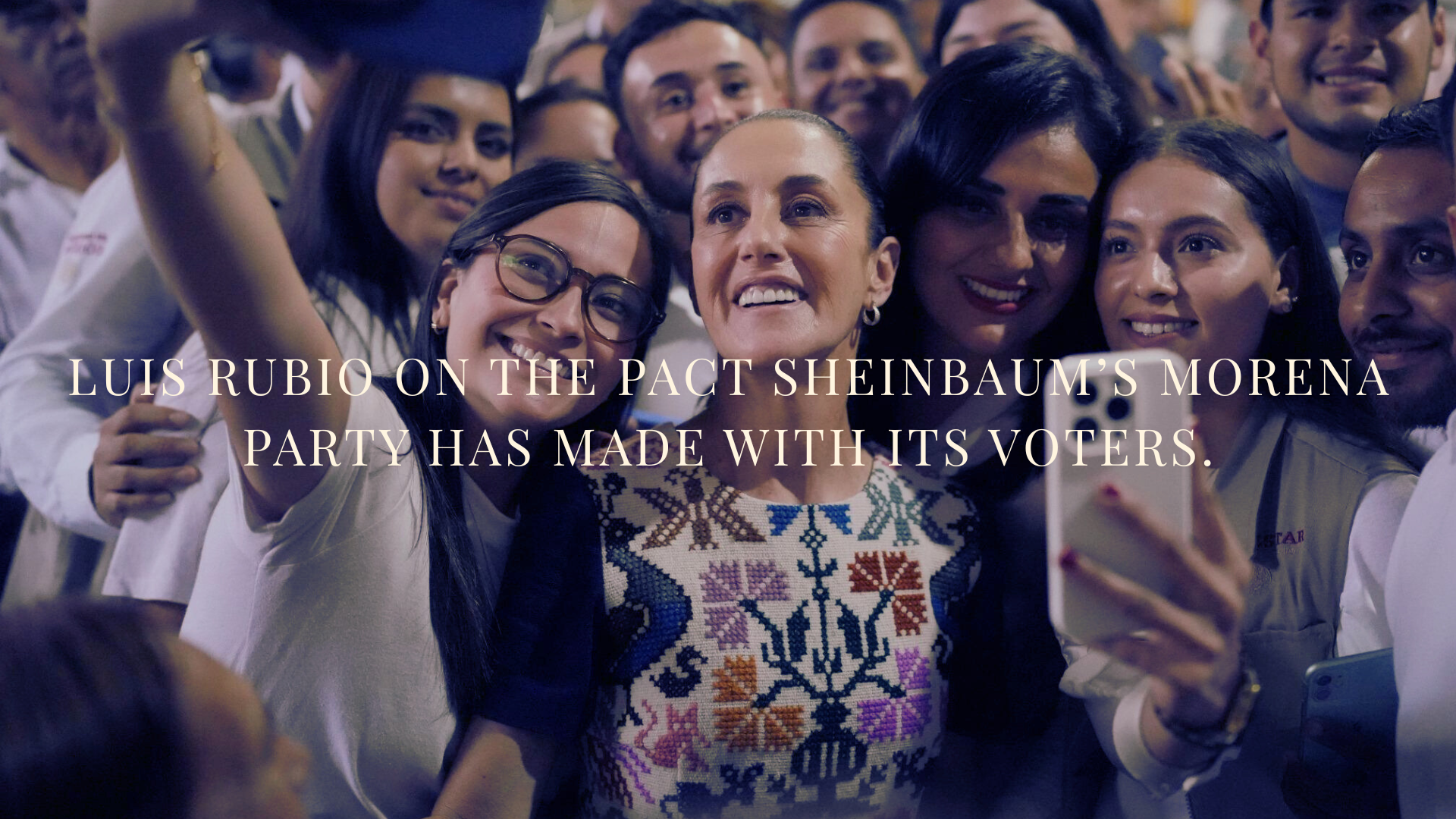
The Morena Pact
In 1989, a series of protests and disturbances in China culminated in the massacre at Tiananmen Square, Beijing’s central plaza. The event shook not only China, but also the outside world, which had placed its hopes on reintegrating China into the community of nations. No less important, the bloodshed threatened the country’s ongoing process of economic transformation. Gradually, internal peace was restored, and an implicit social pact was forged that became the cornerstone of the spectacular economic growth that followed. That pact consisted of an implicit exchange: the government would do whatever was necessary to ensure rapid economic and living standard growth, in return for the population’s acceptance of the Communist Party’s exclusive rule and a commitment not to challenge the political system. The result was staggering.
Although Mexico is not — and cannot be — like China, Morena has been gradually advancing toward a similar arrangement, also implicitly. The Morena pact, articulated over the course of the previous sexenio, reveals not only the nature of Morena, with its dogmas and factions, but also the country’s current moment. One way to describe it is as a tacit agreement whereby the population accepts that there will be no economic growth, jobs, or a functioning health system in exchange for the continuation of social programs and cash transfers.
Of course, this is not a formal agreement, nor one that is explicitly recognized, but rather a de facto exchange that was shaped during the previous administration and that now explains the two most relevant factors in national politics: first, the president’s high popularity, and second, the elevated consumption levels among Mexico’s lower middle class — the primary beneficiaries (and clientele) of the government.
This also explains…

Textbook populism fueled Mexico’s debt and now it’s near breaking point
by Macario Schettino.
Editor’s note: Mr. Schettino is an eminent Mexican economist and retired professor at Monterrey Tech’s School of Government.
——
As the United States debates the One Big Beautiful Bill Act (OBBB), there may also be public discussion around that country’s fiscal sustainability. The US isn’t the only country struggling with the size of its debt — it's actually a very common issue among industrialized nations. But the issue is particularly important for Mexico.
Mexico has long been one of the countries with the lowest tax collection rates in the world, measured as a share of GDP. Prior to the 2013 tax reform, tax revenues were below 10% of GDP, supplemented by oil revenues and income from state-owned enterprises and agencies, bringing the total to about 18% of GDP. That was all the government had to fund its expenses — hence the poor coverage and quality of public services.
Although Mexico joined the global trend toward a welfare state starting in the 1960s, it never enacted a fiscal reform capable of funding its growing obligations. While many attempts were made, only one succeeded — in 1980, with the creation of a value-added tax. The next major reform came in 2013, raising tax revenue from 8% to 14% of GDP. With that, the government’s total revenues reached 22% of GDP.
Those revenues, along with a moderate deficit, allowed for spending close to 24% of GDP — still insufficient to fully meet the government's responsibilities at a reasonable level. However, under former President López Obrador’s administration, public spending increased significantly without a corresponding increase in revenues. As a result…










